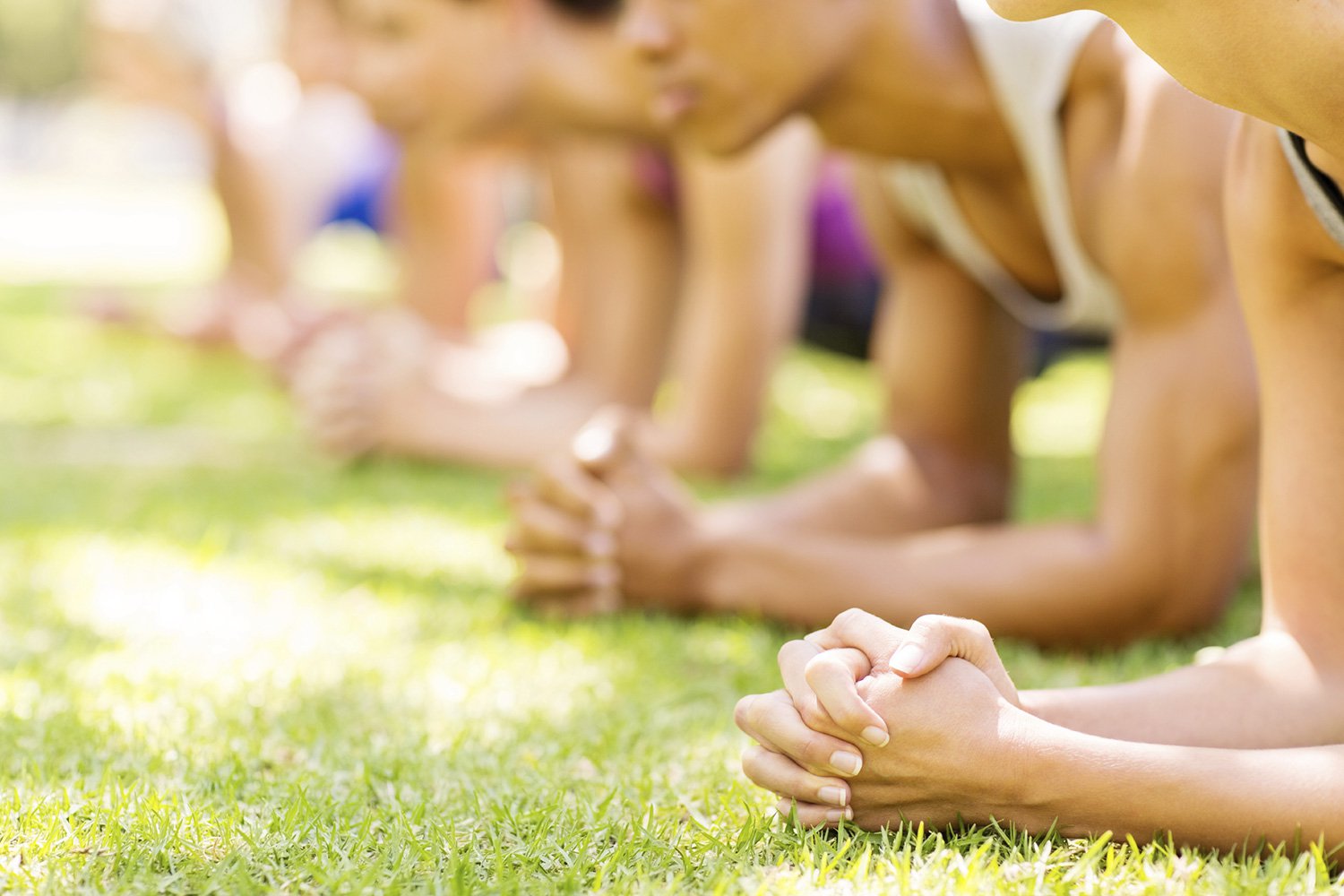
I’ve been hearing a lot about the benefits of planking lately, but it intimidates me. Can you share some tips on how to ease my way into the exercise and different variations to get started? –Nicole
Challenging most of the major muscle groups and requiring no equipment, planking is one exercise that can benefit nearly any body. So how do you know whether you’re doing it correctly and which variation is right for you? Here are a few tips:
The Basics. To come into a plank position, start on all fours with your hands beneath your shoulders and lift your knees while keeping your hips low. For beginners, coming into the position while your head is (gently!) resting against a wall is an effective way to teach the activation of the middle back and abdominal muscles that benefit from this training position. Focus on lifting the portion of your spine that is between your shoulder blades, as well as drawing your belly muscles in towards your spine. You should also keep your hips low to activate the glutes and low abdominal muscles.
Variations. If you have wrist or elbow pain, you can also do plank on your forearms. Altering the hand position by bringing your hands forward slightly can also be used. This will make the position easier, while helping you to eventually strengthen and stabilize the wrist, elbow, and shoulder joints. Another variation is to drop one or both knees for some period of time during the posture, while keeping the activation of the abdominals and glutes.
Image
Advanced options. For a greater challenge, try lifting one leg for half of your hold time followed by the other leg. You can also perform a side plank, with or without one knee down. This position specifically strengthens the quadratus lumborum (a muscle in your lower back), which can be hard to target and may help you avoid lower back pain. You can also lift your upper leg during the side plank, adding an additional challenge to your balance and core stability.
Whichever option you choose, you can start with brief holds of 20 to 30 seconds, working up to as long as two minutes. It is also a great move to include into your workout several times each week, as part of a separate strength training program or during your warm up or cool down after your cardiovascular workout.
Happy planking!
Joli Guenther is a certified personal trainer, yoga instructor and clinical social worker practicing in and around Madison, Wisconsin. To find out more, visit the Meet Our Writers page.
